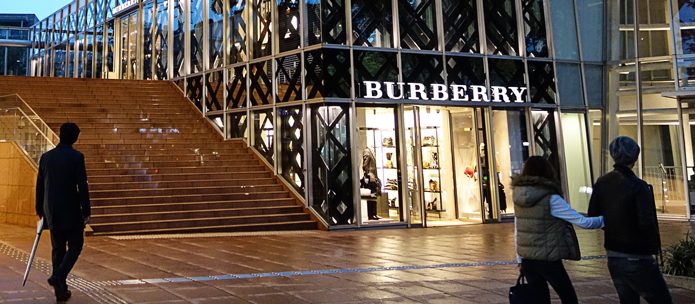
In 2015, Burberry PLC announced it would allow its licensing contract with Japanese garment manufacturer Sanyo Shokai Ltd. to expire. This set the stage for Burberry to take control of its own operations in Japan, after having collaborated with Sanyo Shokai for 45 years.
The loss of ties to a prestigious foreign brand, one that Sanyo Shokai had come to rely on for a significant part of its revenues, came as a major shock. On 17 February, the Nikkei Marketing Journal (NMJ) reported that for the fiscal year ended in December 2016, the firm had announced losses of ¥11.3bn—the largest in its history.
Following the breakup with Burberry, Sanyo Shokai launched two of its own brands: Macintosh London and Crestbridge.
The manager at a department store in a regional city remarked that, compared with Burberry, “The new brands have less than half the brand familiarity. It’s going to take time for them to catch on”.
The article examines not only Sanyo’s woes, but also the continued decline in the nation’s department stores. Apparel generally accounts for about 30% of their total turnover, and the mark-up on such products is comparatively lucrative.
Declining demand at department stores reflects the continuing inroads being made by casual wear brands such as Uniqlo; demographic changes being brought on by Japan’s ageing population; as well as increasing competition from rural shopping centres, which appeal to families who come by car. As a result, overdependence on department store sales at a time when they are declining may prove fatal.
One of Sanyo’s strategies to counter the loss of Burberry was to open its own outlets. Its first Macintosh London outlet opened in mid-2015 inside the Kamiooka branch of the Keikyu department store in Yokohama. But an NMJ reporter observed that, while the store’s women’s floor bustled with activity, by 2pm the Macintosh London corner had been visited by only seven customers, none of whom had lingered for long, let alone made a purchase.
One obvious stumbling block is that the Macintosh London brand is seen as a derivative of Burberry. And the same can be said for Crestbridge. While both the stores and the manufacturer were in agreement that Sanyo needed to do something to fill the void left by Burberry, the strategy adopted has proved to be flawed.
As one department store executive put it, “The assumption that a majority of customers would continue to patronise a successor brand was mistaken. This also applies to the delay in coming up with measures to deal with the error”.
In February, Sanyo Shokai’s new president, Isao Iwata, who was appointed to succeed Masahiko Sugiura on 1 January, 2017, announced a new vision involving diversification of functions into an “all-round fashion firm” that embraces manufacturing, retailing and online sales.
The new mid-term business plan puts forward five goals, including doubling online sales by 2019; developing new consumers in the 20–30 age segment; more frequent release of seasonal product lines, shifting from twice a year (spring/summer, autumn/winter) to six times; boosting its corporate brands, such as the 100-year coat; and opening 15 shops, mainly in urban business areas.
The NMJ reporters have pointed out, however, that this pattern is no different from that of most other firms in the sector, and that the plan lacks specifics.
Minoru Fukuda, a principal at Roland Berger Strategy Consultants, remarked, “I don’t get any sense of direction. Sanyo raised a variety of points, but nothing was fixed. Perhaps there’s a lot of confusion in-house”.